Correct Fill Ratios
- Ethylene glycol/water fill ratios have been established to ensure
a minimum of 50 percent ethylene glycol in the coolant mixture following the
recommended coolant flush, recycle, and drain procedure, and when the engine
block drains and air bleeds are utilized.
- Use the following cooling system capacities for these engines:
| • | The cooling system capacity for the 3100 (l82) engine is 10.9 L
(11.6 qt) |
| • | The cooling system capacity for the 3.4L (LQI) engine is 11.7 L
(12.3 qt) |
| • | The cooling system capacity for the 3800 (L36) Engine is 10.1 L
(10.7 qt). |
- The coolant recovery reservoir capacity is 0.75 L (0.8 qts)
to the COLD mark on the reservoir. For cooling system capacities, refer to
Fluid Capacity Specifications
. The quantities listed in the
filling procedure include the additional quantity to displace the air that
remains in the cooling system after a static refill.
- Using the correct fill ratio and the following procedures ensures
a minimum concentration of 50 percent ethylene glycol in the cooling system
and simplifies the customer fill task.
Draining Procedure
Notice: When adding coolant, use DEX-COOL® coolant. If silicated coolant
is added to the system, premature engine, heater core or radiator corrosion
may result. In addition, the engine coolant will require change sooner-at
50 000 km (30,000 mi) or 24 months.
- Park the vehicle on a level surface.
- Remove the coolant recovery reservoir. Clean the reservoir. Refer
to
Coolant Recovery Reservoir Replacement
.
Caution: As long as there is pressure in the cooling system, the temperature
can be considerably higher than the boiling temperature of the solution in
the radiator without causing the solution to boil. Removal of the pressure
cap while the engine is hot and pressure is high will cause the solution
to boil instantaneously -- possibly with explosive force -- spewing
the solution over the engine, fenders and the person removing the cap.
- When the engine is cool, remove the radiator filler cap . Refer to
Radiator Assembly
.
- Place a drain pan under the radiator to recover the coolant.
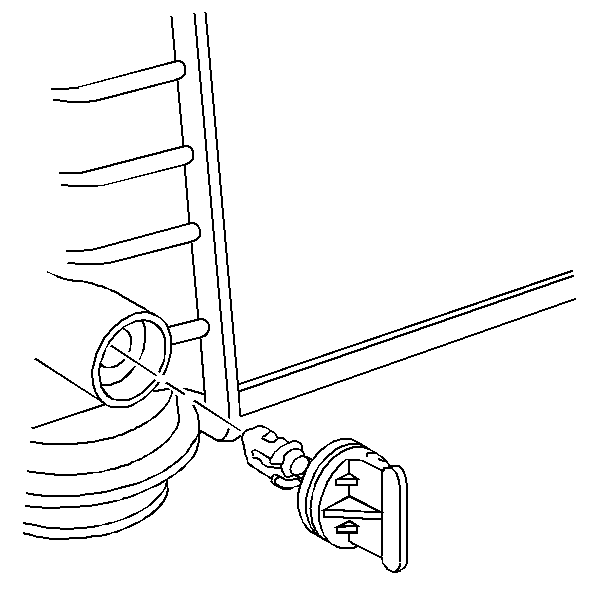
- Open the radiator drain cock at the bottom of the radiator. For procedures
where you partially drain the cooling system, opening the drain cock should
provide sufficient draining. No further action should be required.
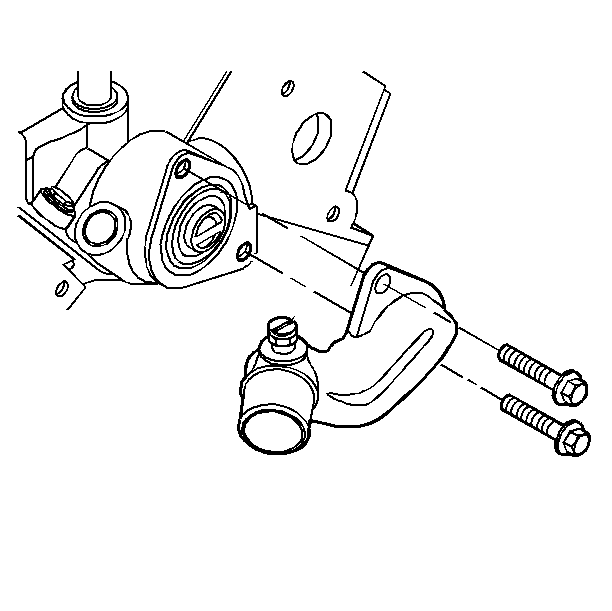
- On the 3.1L engine, remove the coolant outlet cap and the thermostat
or open the air bleed vents. These vents are on the coolant outlet and above
the coolant pump. Open the vents two or three turns.
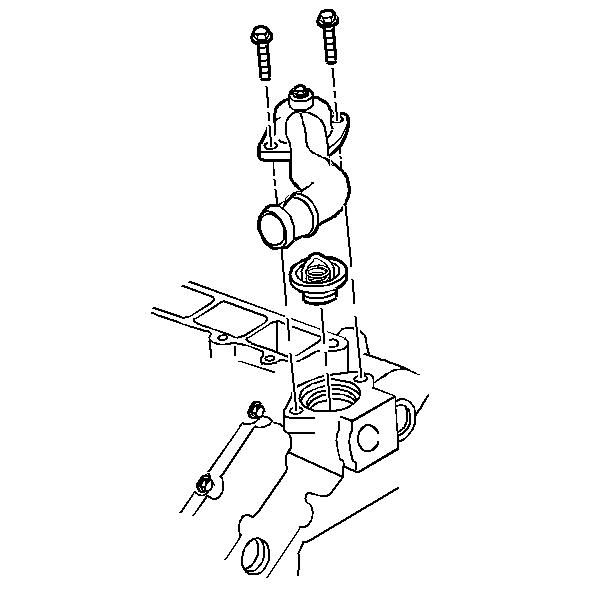
- On the 3.4L engine, remove the coolant outlet cap and thermostat or open the
air bleed vents. These vents are on the coolant outlet and the heater coolant
inlet pipe near the brake master cylinder. Open the vents two or three turns.
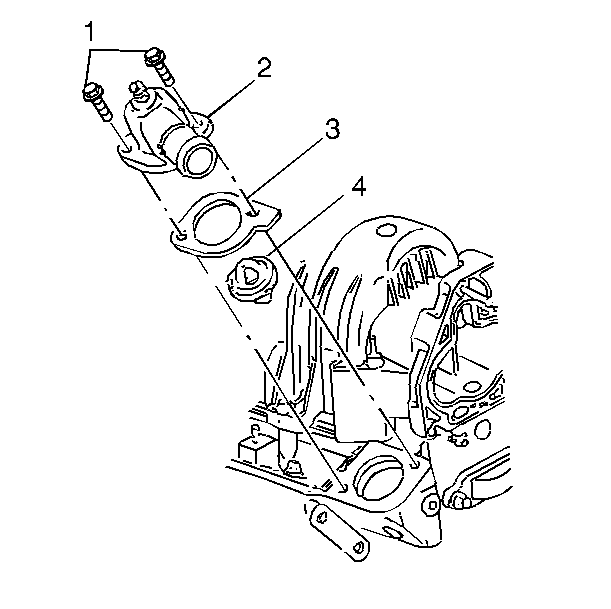
- On the 3.8L (L36) engine, remove the coolant outlet cap and the thermostat
or open the air bleed vent. The vent is on the coolant outlet. Open the vent
two or three turns.
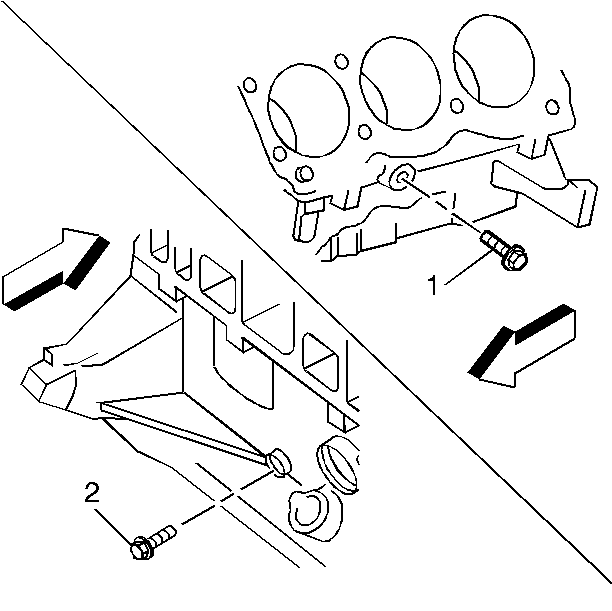
- On the 3.1L engine, remove both of the engine block coolant drain hole plugs.
The left side drain plug (1) is between the starter and the engine oil filter.
The right side drain plug (2) is near the engine crank sensor.
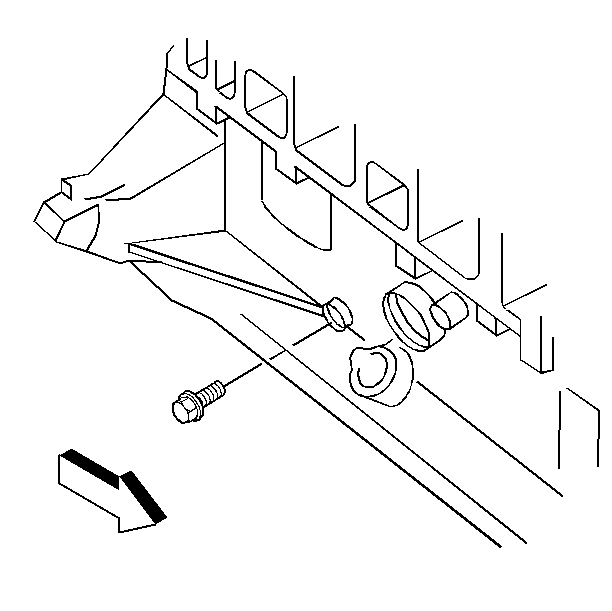
- On the 3.4L engine, remove the coolant drain hole plug by the engine crank
sensor.
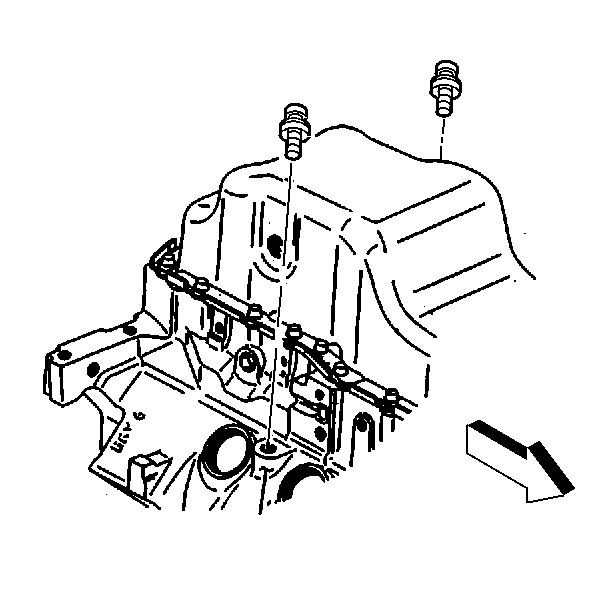
- On the 3.8L (L36) engine, remove both of the engine knock sensors (1).
- Allow the coolant to completely drain.
Filling the Cooling System

- Close the radiator drain cock. Reinstall
all of the engine block drain hole plugs (knock sensors on 3.8L (L36)). Reconnect
the inlet pipe to the engine oil cooler.
- Install the coolant recovery reservoir. Refer to
Coolant Recovery Reservoir Replacement
.
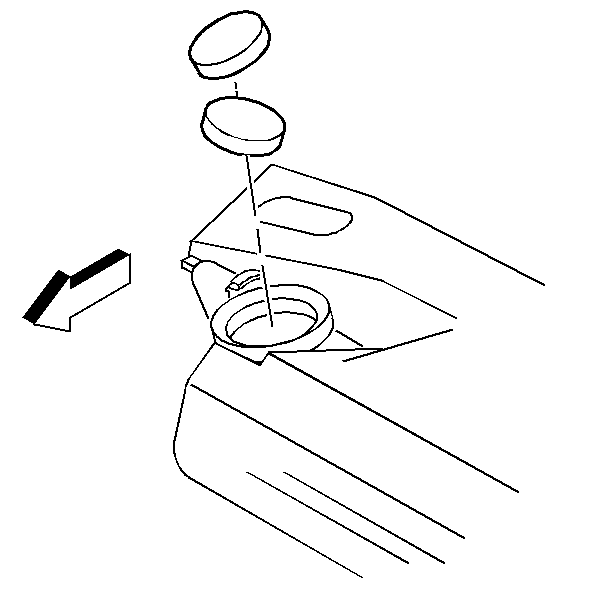
Important:
| • | When you refill the cooling system, add 2 engine coolant supplement
sealant pellets, GM P/N 3634621, or equivalent. |
- Slowly fill the cooling system through the radiator neck using the following
procedure:
| 3.1. | If the cooling system is being refilled only, no flushing, use
a 50 percent ethylene glycol and 50% clean water mixture to fill the system.
Fill the system until the level of the 50/50 mixture reaches the base of the
radiator filler neck. Wait 2 minutes, then recheck the level of the coolant.
If necessary, add a 50/50 ethylene glycol/water mixture to restore the coolant
level to the base of the radiator neck. |
| 3.2. | If the cooling system has been flushed, first add 100% ethylene
glycol. Refer to the coolant static fill capacity chart for the appropriate
engine application. |
| 3.3. | Slowly add clean water to the system until the level of the coolant
reaches the base of the radiator neck. |
| 3.4. | After 2 minutes, recheck the level of the coolant mixture. |
| 3.5. | If necessary, add clean water to restore the coolant level to
the base of the radiator neck. |
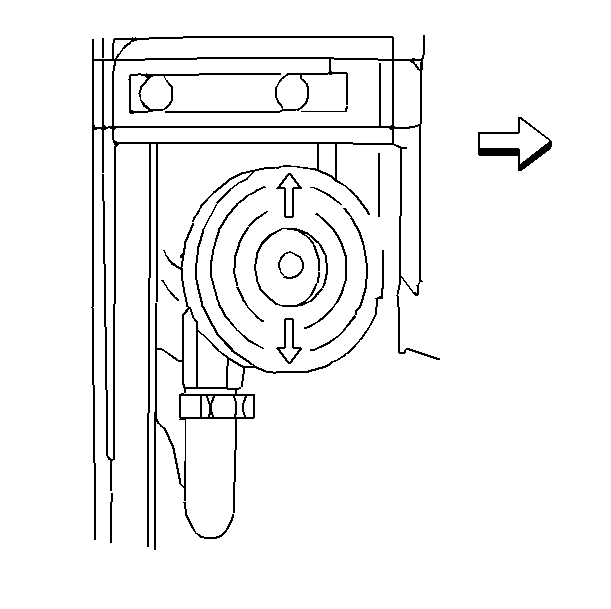
- Install the radiator cap. Line up the
arrows (1) with the overflow tube (2).
- Close all of the air bleeds. Do not overtighten the air bleed
valve. The air bleed valve is made of brass.
- Fill the recovery reservoir with a 50% ethylene glycol and a 50%
clean water coolant mixture. Install the proper amount of the coolant into
the recovery reservoir. For all engines, add 1.7 L (1.8 qt)
of a 50/50 mixture of ethylene glycol and clean water to the coolant recovery
reservoir.
Notice: The Low Coolant warning/indicator lamp may come on after this procedure.
After operating the vehicle so that the engine heats up and cools down three
times, the Low Coolant warning/indicator lamp does NOT go out, or fails to
come on at the ignition check, and the coolant is at the level indicated in
step 3, refer to SECTION 8A-90 or 8A-81. If at any time the TEMP warning/indicator
lamp comes on, immediate action is required.
Notice: Pure coolant can be added to raise the boiling point of the coolant,
but too much will affect the freezing point. Do not use a solution stronger
than 70 percent, as the freeze level rises rapidly after this point.
Pure coolant will freeze at -22°C (-8°F).
- Inspect the freeze protection of the
engine coolant. Refer to
Coolant Concentration Testing
.










